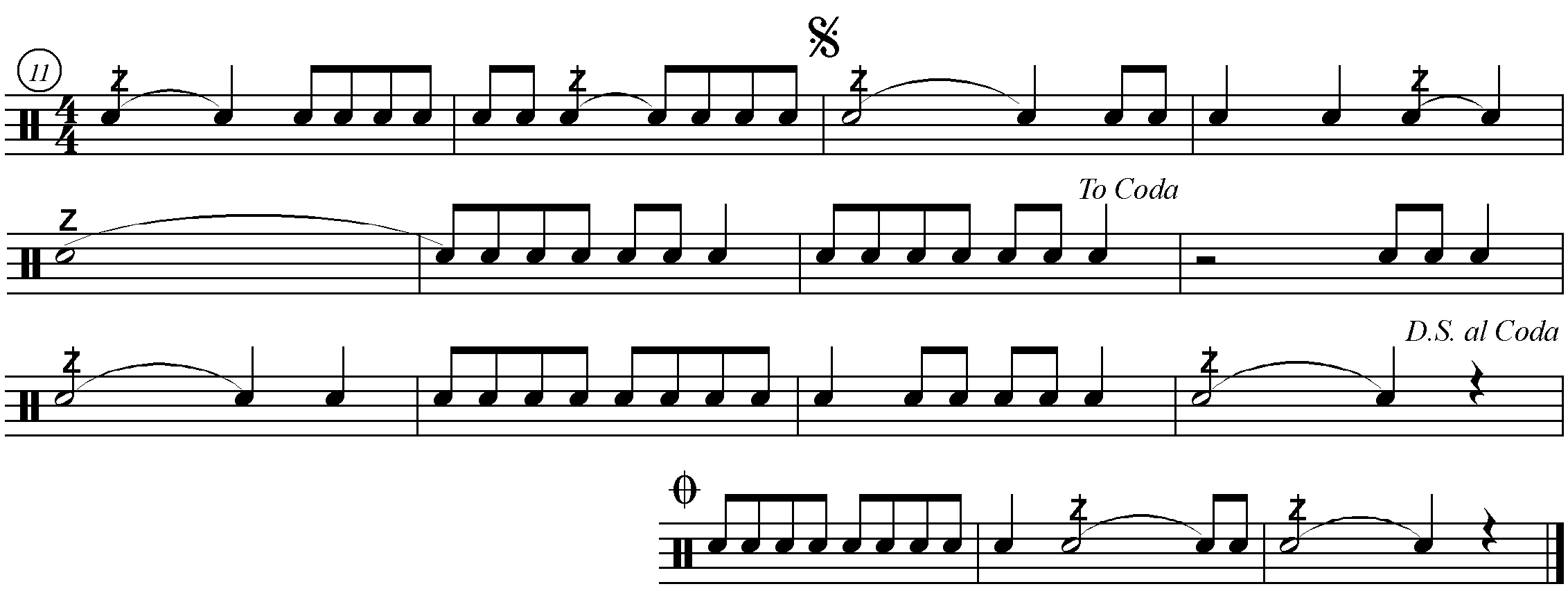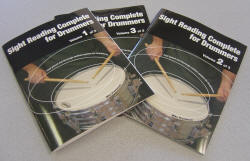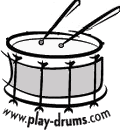Sheet Music Repeats
The following content is from my book Sight Reading Complete for Drummers. Enjoy!
Music notation contains flexible techniques for repeating music. This lesson introduces
the commonly used repeats. The rest of the book will occasionally use many of these repeats.
Single Measure Repeat
The single measure repeat in the second measure notates to repeat the first measure one
time.

Single Measure Multiple Repeat
Composers sometimes use a number above a single measure repeat to indicate to repeat
the repeat that many times. For example, in the next example, you repeat the repeat five times (you play the first measure six times). You can count
these measures as follows “1-2-3-4 for the first measure then 1-2-3-4,
2-2-3-4, 3-2-3-4, 4-2-3-4,
5-2-3-4 then back to 1-2-3-4”.

Two Measure Repeat
A two-measure repeat indicates to repeat the previous two measures. In the following
example, notice that measures four and five indicate to repeat measure two and three.

Multi-Measure Rest
Composers have an easy way to rest (play nothing) for as many measures as needed. In
the following example, you rest for six measures when you get to measure three. Generally, to count this rest think “1-2-3-4,
2-2-3-4, 3-2-3-4, etc.” similar to a single measure multiple
repeat mentioned above.

Mid Measure Repeat
A mid measure repeat indicates to repeat the first half of the measure.

Slash Notation
A slash in a measure can have two interpretations. It either means to repeat the last
beat or to improvise. If you see a full measure of slashes that usually means to improvise. When slashes are used to indicate improvisation, often the
composer will place a rhythm in the preceding measure or above critical measures indicating the underlying rhythm to be played. Although slash notation
is more common in drum set scores, you will find it used in other genres of music.
Interpret the following partial measures as last beat repeats:

The following music snippet for drum set demonstrates a suggested
rock rhythm.

Repeat Entire Piece
A backward repeat sign at the end of a score indicates to repeat the entire piece.

Repeat a Section
The backward repeat in measure four indicates to go back to the forward repeat in measure
two. Although this example repeats entire measures, repeat signs can be placed anywhere in a measure.

Alternate Endings
The first time through, play the measure marked by 1. The second time, play the measure
marked by 2 in place of 1.

D.C. al fine
Go back to the beginning and play to the word Fine. Alternatively, the composer might
notate just D.C. When just D.C. is notated, the “al fine” is implied.
D.C. Al Coda
When you get to the D.C. al
Coda go back to the beginning and play to the To Coda notation,
then skip to the coda.

D.S. Al Coda
When you get to the D.S. al
Coda go back to the Segno sign and play to the To Coda notation,
then skip to the coda.

Get the book!
The content of this page is from...
 |
SRC Bundle: All 3 Volumes
Includes all three volumes (1, 2, & 3).
175 total pages (68 lessons,
4 warm up routines, 5 chop builder
systems, and 9 solos)
|
|
